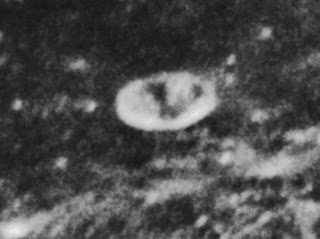"Glass on Earth is well known to have little tensile strength, meaning it doesn't stretch easily (because it is brittle) and will not withstand even a very weak impact from a hard object (shear). ... The reason for these properties on Earth is that it is pretty much impossible to extract the water from glass as it is forming.... Water is all around us, even in the most arid deserts. ... But the Moon is a completely different story. It is airless, with no humidity to interfere with the molecular bonding of the silicates that make-up the glass that is omnipresent. The hard-cold vacuum enhances the strength of lunar glass to the point that it is approximately twice as strong as steel under the same stress conditions. In fact, several papers from scientists at Harvard and other universities have suggested that lunar glass is the ideal substance from which to construct a domed lunar base. All we are proposing is that somebody else came up with the idea long before we did."-- Dark Mission (2nd edn), by Richard Hoagland & Mike Bara, p.244. Written in 2007.
"Glass on Earth is well known to have little tensile strength, meaning it doesn't stretch easily because it is brittle and will not withstand even a very weak impact from a hard object. ... The reason for these properties on Earth is that it is pretty much impossible to extract the water from glass as it is forming. Water is all around us, even in the most arid deserts. ... But the Moon is a completely different story. It is airless, with no humidity to interfere with the molecular bonding of the silicates that make-up the glass that is omnipresent. The hard-cold vacuum enhances the strength of lunar glass to the point that it is approximately twice as strong as steel under the same stress conditions. In fact, several papers from scientists at Harvard and other universities have suggested that lunar glass is the ideal substance from which to construct a domed lunar base. All I'm proposing is that somebody else came up with the idea long before we did. "Somebody," as in Ancient Aliens."-- Ancient Aliens on the Moon, by Mike Bara, pp 51-52. "Written" in Summer 2012.
So it's the water in glass as we know it that makes it brittle. Lunar glass, having no water, is what you make 2-mile high skyscrapers (that look just like photo scanning errors) from. You'd think that two authors could keep that simple, albeit wrong, idea in their heads as they continue to inflict their drivel on an increasingly indifferent readership. That turns out to be untrue too.
"The Moon contains as much water as the Earth."
-- Mike Bara, blog 6 Sept 2011. MORE HERE. (Interestingly, Mike transferred all the posts from mikebara.com to mikebara.blogspot.com when he abandoned the former domain name. Except that one. May we hope that he realized he was writing poppycock?)
"the moon has as much water inside it as the Earth has in its oceans."-- Richard Hoagland, on Coast to Coast AM, 25/26 May 2011. MORE HERE.
Misquote
Both the above book extracts cite the same source: In Situ Rock Melting Applied to Lunar Base Construction (...etc) by J.C.Rowley and J.W. Neudecker.2 However, Hoagland & Bara flagrantly misquote Rowley & Neudecker. This is what the paper actually says:
"It is anticipated that vacuum conditions and essentially zero moisture content of the lunar soils and rocks should have significantly reduced thermal diffusivity relative to terrestrial counterparts. Therefore, reduced heat losses could be expected for lunar applications. The absence of moisture and oxygen should reduce the corrosion rate of the refractory metal penetrators. ... This property for lunar soils and basalts, as reported in the literature (MacKenzie and Claridge, 1980), appears to be within the same range as terrestrial materials of roughly the same composition."The paper discusses lining and stabilizing tunnels and caverns by melting of the inside surfaces, not construction of skyscrapers or glass domes over craters. Really, Hoagland & Bara should be more careful with their citations.
======================================
1. Low tensile strength does not translate into vernacular as "doesn't stretch easily." "Does stretch easily" would be somewhat more accurate, but the real point about tensile strength is not whether a material stretches but whether it breaks when someone attempts to stretch it. The measure of resistance to stretch is the Young's modulus, which for typical glass is around 70,000 Mega-Pascals, cf. steel upwards of 200,000 MPa. A really low tensile-strength material like polyethylene would have Young's modulus around 230 MPa. You won't want to build lunar skyscrapers out of that, for sure.
Tensile strength also does not correlate with brittleness. A brittle material might still have a high Young's modulus. The measure of brittleness is the Shear modulus, which for typical glass is ~30 MPa, cf. steel 80,000 MPa. Yes, glass is very brittle. Who knew?
So "as strong as" doesn't mean much unless we know whether we're pushing, pulling, bending, or throwing stones. Earth-bound glass is already twice as strong as steel, in one sense. Glass actually has higher compressive strength than typical steel — 1000 MPa cf. steel 350 MPa.This makes it an architecturally useful material, since a primary source of stress on a building is compression due to gravity. Seen any glass-clad office blocks lately?
2. Link to the Rowley & Neudecker paper








